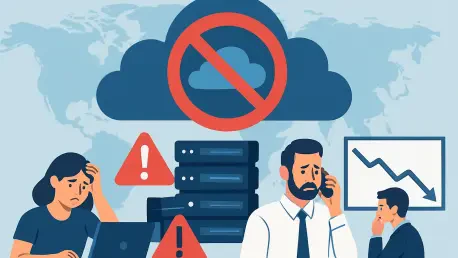Today, we’re thrilled to sit down with Oscar Vail, a renowned technology expert whose insights into cutting-edge fields like quantum computing, robotics, and open-source projects have made him a trusted voice in the industry. With a finger on the pulse of tech advancements, Oscar brings a wealth of knowledge to our discussion about a recent high-profile disruption in cloud computing—specifically, the outage affecting Microsoft’s Azure platform. In this interview, we’ll explore the root causes of the incident, its widespread impact on businesses and services globally, Microsoft’s response to the crisis, and what this event reveals about the broader reliance on cloud infrastructure in today’s digital landscape.
Can you walk us through what caused the recent Azure cloud service outage?
Certainly. Microsoft identified a configuration change in their Azure infrastructure as the primary trigger for the outage. This misstep essentially disrupted the system’s ability to function smoothly, and the specific component hit was the Azure Front Door, which is their global content and application delivery network. It’s a critical piece of the puzzle, so when it went down, the ripple effects were felt across numerous services.
How did Microsoft tackle the issue once it was identified?
Microsoft acted pretty quickly once they pinpointed the problem. They deployed a fix and started rolling it out to restore services, as they noted on their Azure status page. While exact timelines can vary, their updates on social media and the status page suggest they didn’t waste time in getting the solution underway, which is crucial in minimizing downtime for users.
Which services felt the brunt of this outage?
The impact was quite broad. Users reported issues with major services like Office 365, Minecraft, and Xbox Live, among others. Beyond that, platforms like Copilot, Costco, and Starbucks also faced disruptions, as tracked by sites monitoring online outages. It really showed how interconnected and dependent many everyday tools are on Azure’s infrastructure.
What kind of disruptions did businesses and organizations experience due to this outage?
Businesses, especially in industries like aviation, took a significant hit. For instance, Alaska Airlines reported that the outage affected their check-in systems, causing operational headaches. Similarly, Air New Zealand struggled with payment processing and digital boarding passes, leading to travel delays. These kinds of issues highlight how a single outage can grind critical operations to a halt.
Can you elaborate on the global scale of this outage’s impact?
Absolutely, the effects weren’t confined to the U.S. In New Zealand, for example, the national airline faced challenges, but it went beyond that—government services like the police and parliament websites were also knocked offline. This outage underscored how cloud disruptions can impact public infrastructure and services worldwide, not just private enterprises.
How does this Azure outage stack up against other recent cloud service interruptions?
It’s interesting to note the timing, as this incident came just over a week after a major outage with Amazon’s cloud services, which also took down a wide array of online platforms. While Amazon remains the market leader in cloud computing, Microsoft holds a strong second place ahead of Google in most regions. This close succession of outages from two giants raises questions about reliability across the board in this space.
What might this incident mean for Microsoft’s reputation, especially with their quarterly earnings report on the horizon?
Timing-wise, this couldn’t have been worse, with the outage happening just before their earnings report. It might rattle investor confidence to some extent, as reliability is a cornerstone of cloud services. Microsoft will likely need to address this head-on, reassuring stakeholders with clear plans to bolster their infrastructure and prevent future disruptions.
Why are so many modern services and applications so reliant on cloud platforms like Azure?
Cloud platforms like Azure offer scalability, cost-efficiency, and accessibility that traditional on-premises solutions just can’t match. They allow businesses to store data, run applications, and serve customers globally without massive upfront investments in hardware. This reliance, though, means that when a platform like Azure goes down, the domino effect is massive—everything from productivity tools to customer-facing apps can grind to a halt.
What does this outage reveal about the vulnerabilities in our dependence on cloud infrastructure?
It really shines a light on the fragility of our digital ecosystem. When a single provider like Microsoft experiences an issue, the cascading impact across industries and regions shows how concentrated risk has become. It’s a wake-up call to consider redundancy, multi-cloud strategies, and better contingency planning to mitigate the fallout of such events.
What is your forecast for the future of cloud computing reliability in light of incidents like this?
I think we’re at a turning point. Cloud computing isn’t going anywhere—it’s the backbone of modern tech—but providers like Microsoft will face growing pressure to enhance reliability and transparency. We’ll likely see more investment in robust failover systems and perhaps even regulatory scrutiny to ensure uptime for critical services. At the same time, businesses might diversify their cloud dependencies to avoid being caught off guard. It’s a complex challenge, but one that will drive innovation in the space.









